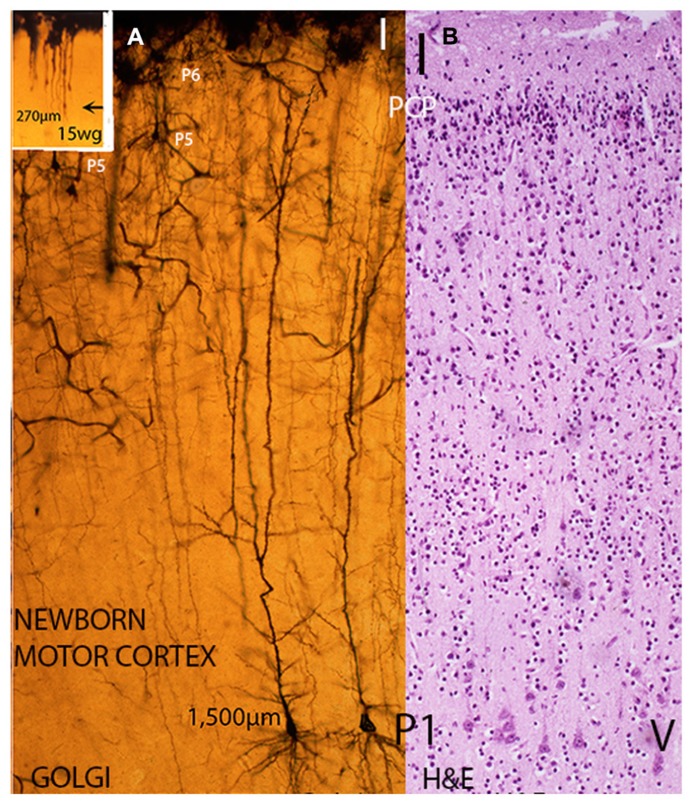FIGURE 3.
Composite figure of photomicrographs including a rapid Golgi (A) and a hematoxylin and eosin (B) preparation of newborn infants motor cortex showing their different staining capabilities. While in Golgi preparations (A) the whole neuron (dendritic branches with spines and axon with collaterals) is stained as well as the local microvasculature and gray matter protoplasmic astrocytes, in H & E preparations (B) only the neurons and glial cells bodies are stained. (A) Illustrates, at similar microscopic magnification, the size (apical dendrite length) and dendritic morphology of analogous deep, large, and early motor pyramidal neurons of the P1 stratum from a 15-week-old fetus (inset) and a newborn infant. While remaining functionally anchored to first lamina, the fetus P1 pyramidal neuron size (apical dendrite length) measures about 270 μm, has few short basal dendrites and a couple of dendritic spines (see Figure 1B), the newborn motor pyramidal neuron (A) has elongated the apical length, both anatomically and functionally to around 1,500 μm. These neurons apical dendrite, the terminal dendritic bouquets within the first lamina, the several collaterals dendrites and the long basal ones all covered by innumerable dendritic spines (postsynaptic structures). Moreover, the pyramidal neuron dendrites will continue to elongate anatomically and functionally during postnatal life while retaining its first lamina functional anchorage and its body cortical location. The cortex motor regions pyramidal neurons will operate the human’s unique motor activities, such as: speaking, writing, painting as well as thinking as a premotor cortical activity. (B) H & E preparation of the motor cortex of a newborn infant showing its overall cytoarchitecture, the pyramidal neurons of P1 functional stratum (layer V in current nomenclature), the apparently barren first lamina (I) and a thin remnant of still undifferentiated neurons from the original pyramidal cell plate (PCP) under the first lamina. These neurons will mature functionally during early postnatal life and will incorporate an additional (P7) pyramidal cell stratum of the human motor cortex. (Modified from Marín-Padilla, 2011).

